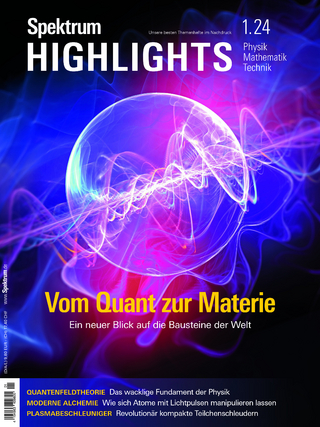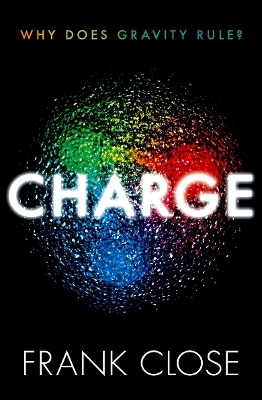
The Ideas of Particle Physics
Cambridge University Press (Verlag)
978-1-108-72740-2 (ISBN)
- Lieferbar (Termin unbekannt)
- Versandkostenfrei innerhalb Deutschlands
- Auch auf Rechnung
- Verfügbarkeit in der Filiale vor Ort prüfen
- Artikel merken
This book is a comprehensive introduction to particle physics, bridging the gap between traditional textbooks on the subject and popular accounts that assume little background knowledge. This fourth edition is fully revised, including the most recent ideas and discoveries, and the latest avenues of research. The development of the subject is traced from the foundations of quantum mechanics and relativity, through the formulation of quantum field theories, to the standard model. Research now continues with the first signs of physics beyond the standard model and with the formulation of modern string theory which aims to include a quantum theory of gravity for the first time. This book is intended for anyone with a background in physical sciences who wishes to learn about particle physics. It is also valuable to students of physics wishing to gain an introductory overview of the subject.
James E. Dodd is co-founder of the St Cross College Centre for the History and Philosophy of Physics. He has studied Physics at the University of London, the Univsity of Oxford and the University of Cambridge, and focused on the production of charmed particles in high energy hadron collisions. Ben M. Gripaios is Professor of Theoretical Physics at the Cavendish Laboratory, University of Cambridge; and is a Fellow of King's College, Cambridge. He has previously held research positions at the Organisation Européenne pour la Recherche Nucléaire (CERN), Geneva, Université de Lausanne, Switzerland and the University of Oxford. His research focuses on the search for physics beyond the Standard Model.
Preface; Part I. Introduction: 1. Matter and light; 2. Special relativity; 3. Quantum mechanics; 4. Relativistic quantum theory; Part II. Basic Particle Physics: 5. The fundamental forces; 6. Symmetry in the microworld; 7. Mesons; 8. Strange particles; Part III. Strong Interaction Physics: 9. Resonance particles; 10. SU(3) and quarks; Part IV. Weak Interaction Physics I: 11. The violation of parity; 12. Fermi's theory of the weak interactions; 13. Two neutrinos; 14. Neutral kaons and CP violation; Part V. Weak Interaction Physics II: 15. The current-current theory of the weak interactions; 16. An example leptonic process: electron-neutrino scattering; 17. The weak interactions of hadrons; 18. The W boson; Part VI. Gauge Theory of the Weak Interactions: 19. Motivation for the theory; 20. Gauge theory; 21. Spontaneous symmetry breaking; 22. The Glashow–Weinberg–Salam model; 23. Consequences of the model; 24. The hunt for the W±, Z0 bosons; Part VII. Deep Inelastic Scattering: 25. Deep inelastic processes; 26. Electron-nucleon scattering; 27. The deep inelastic microscope; 28. Neutrino-nucleon scattering; 29. The quark model of the structure functions; Part VIII. Quantum Chromodynamics – The Theory of Quarks: 30. Coloured quarks; 31. Colour gauge theory; 32. Asymptotic freedom; 33. Quark confinement; Part IX. Electron-Positron Collisions: 34. Probing the vacuum; 35. Quarks and charm; 36. Another generation; Part X. The Standard Model: 37. The model in summary; 38. Precision tests of the model; 39. Flavour Mixing and CP violation; 40. The Large Hadron Collider; 41. Discovery and properties of the Higgs boson; Part XI. Beyond the Standard Model: 42. Reasons to go beyond; 43. Neutrino masses and mixing; 44. Grand unification; 45. Supersymmetry; 46. Composite Higgs models; 47. Axions and the Strong CP problem; Part XII. Particle Physics and Cosmology: 48. The big bang and inflation; 49. The cosmic microwave background; 50. The matter-anti-matter asymmetry; 51. Dark matter; 52. Dark energy; Part XIII. Gravity and Gravitational Waves: 53. From general relativity to gravitational waves; 54. The discovery of gravitational waves; 55. Gravitational wave and multi-messenger astronomy; 56. The future: Super Ligo and LISA; Part XIV. String Theory: 57. Origins – the hadronic string; 58. String theory to M-theory; 59. The AdS-CFT correspondence; 60. Consequences of the theory; Part XV. The Future – To Boldly Go!: 61. Accelerators, observatories and other experiments; 62. Known unknowns; 63. Glittering prizes; 64. Unknown unknowns: it must be beautiful; Appendices: 1. Units and constants; 2. Glossary; 3. List of symbols; 4. Bibliography; 5. Elementary particles data; Name index; Subject index.
| Erscheinungsdatum | 01.07.2020 |
|---|---|
| Zusatzinfo | Worked examples or Exercises; 14 Halftones, black and white; 157 Line drawings, black and white |
| Verlagsort | Cambridge |
| Sprache | englisch |
| Maße | 189 x 244 mm |
| Gewicht | 720 g |
| Themenwelt | Naturwissenschaften ► Physik / Astronomie ► Hochenergiephysik / Teilchenphysik |
| ISBN-10 | 1-108-72740-9 / 1108727409 |
| ISBN-13 | 978-1-108-72740-2 / 9781108727402 |
| Zustand | Neuware |
| Haben Sie eine Frage zum Produkt? |
aus dem Bereich


